Given the enthusiasm with which yesterday’s absurd Onion headline about Internet privacy was circulated, I decided to publish this slightly devious, slightly concerning, slightly useful little trick for circumventing the privacy constraints on LinkedIn’s search utility. In this post, I describe a technique that exposes additional user data about people outside your network whom you find via LinkedIn Search.
Note: If you’re about to post a nasty comment berating me for undermining privacy on the Web, please consider redirecting it to April Kelly, Senior Director of Customer Operations at LinkedIn (support@linkedin.com). I have seldom used the technique described in this post, but still I don’t believe it to be an infraction of anyone’s privacy. If I have identified here a problem with LinkedIn’s privacy regime, publishing this piece would be the most I can do to remedy it.
Now, before demonstrating how to expose the additional data, let’s look at an example of exactly what data we can expose and why we might want to expose it. Here is an example of a user profile found directly via LinkedIn search compared to a profile for the same user uncovered using our technique:
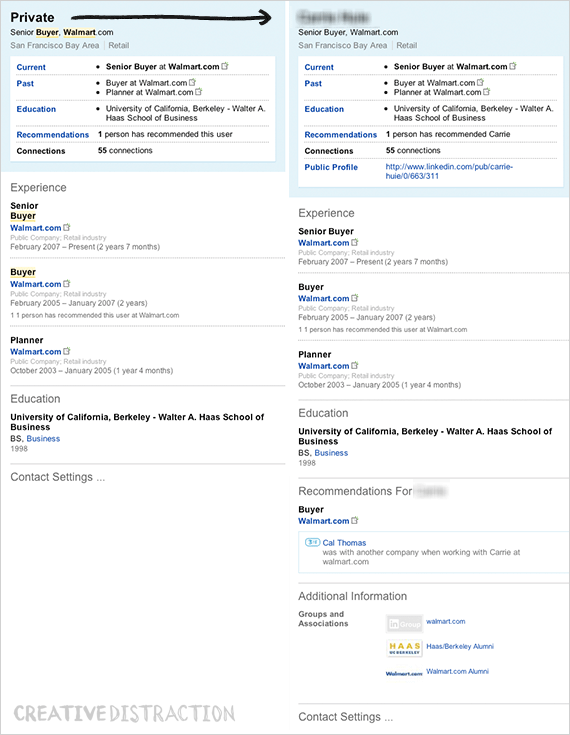
As you can see, using our technique produces a profile for the user that includes not only her real name, but also personal information such as her “Recommendations” and “Groups and Associations.” Note that while I have blurred individual names here to avoid needlessly exposing personal information, you can see that this individual is not a 1st, 2nd, or 3rd degree connection of mine. And while the extent of the information available depends on my own LinkedIn account status (e.g. I have a business account, not a personal one), this technique at the very least will expose users’ names, which are otherwise obscured when searching by job title or company.
To give some context, let’s root this technique and its application in a real-life situation. Okay, we’ll use mine: As most Creative Distraction readers know, my wife and I created the world’s first iPod earphone charms, called Emotibles. In this hypothetical example, let’s suppose that instead of cultivating the Emotibles brand to be super rad and have tremendous indie cred, we decided to just sell our product into Walmart and call it a day. How would we do it?
Some background: Big retail buyers can be some of the hardest-to-reach people in the world, probably because years of consolidation in the retail sector has left these precious few folks holding the keys to the kingdom of mass market distribution for goods like our little iPod accessories. Small-time players typically meet big buyers through agents, reps, or trade shows. But social networks have emerged as a new way to reach the unreachable, or at least to identify a “target” list of folks we might seek out by other means.
How to Do It
In our hypothetical example, let’s say we want to find a buyer at Walmart.com in San Francisco. (We’re starting small.) We go to LinkedIn and search:

Our results would look something like this:
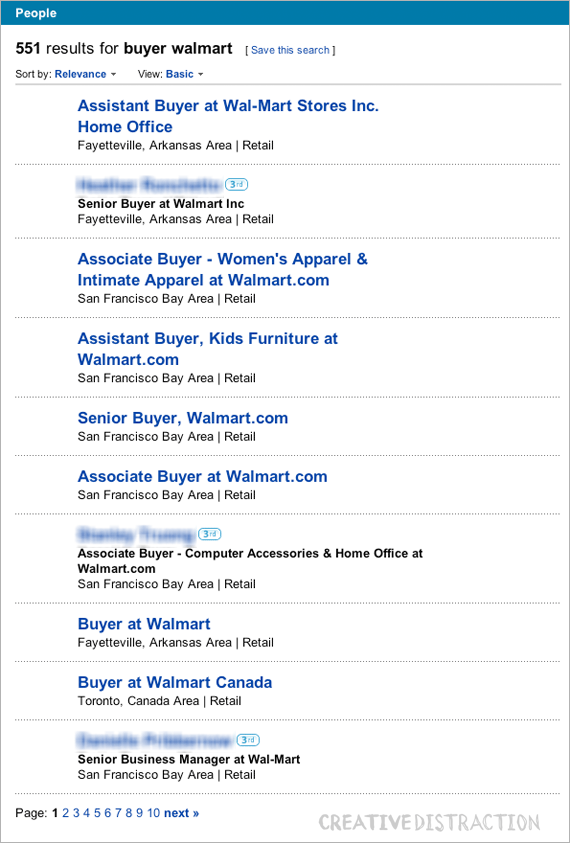
Here we have 551 results, probably tens of potential leads, but most of them are nameless and lie outside our network. What are we to do?
We could, of course, pay for the privilege of sending “InMail” to these leads, but even if we were to do that, it would be helpful to know a little more about them. Enter a little trick for seeing a little more: use LinkedIn’s “Viewers of this profile also viewed” filter within degrees of your targets to show more information about them.
For example, let’s say we like the look of this Senior Buyer:

We click the search listing, and the profile appears:
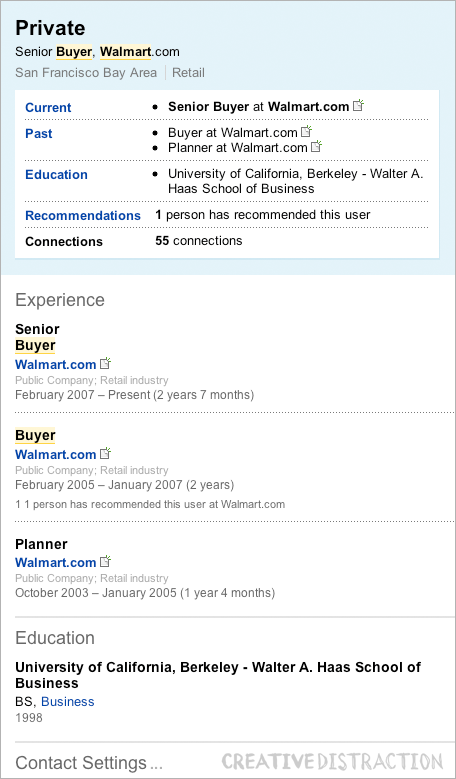
The profile currently obscures some useful information, like the buyer’s name. No matter. Looking bottom right, we see the “Viewers of this profile also viewed” filter, and unlike the search results, it exposes individual names with job titles and company names.
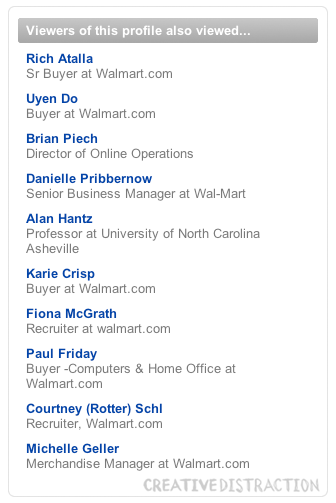
Given the logical assumption that the viewers of both this profile and another profile are the same as viewers of another profile and this profile, we can easily expose the name information on this profile by visiting on of these other profiles and looking at the “Viewers of this profile also viewed” filter.
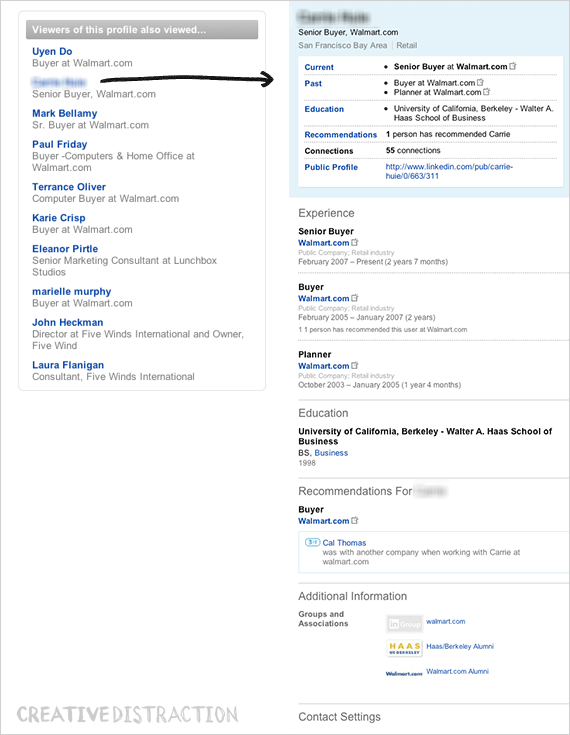
Click through, and now we see a bit more about our target buyer. It’s that easy.
While I can’t say that this odd behavior in LinkedIn’s privacy regime is a flaw, exactly, it did surprise me. I hope you find it useful, whether you’re trying to sell a product into Walwart or hide from the prying eyes of people like me.
